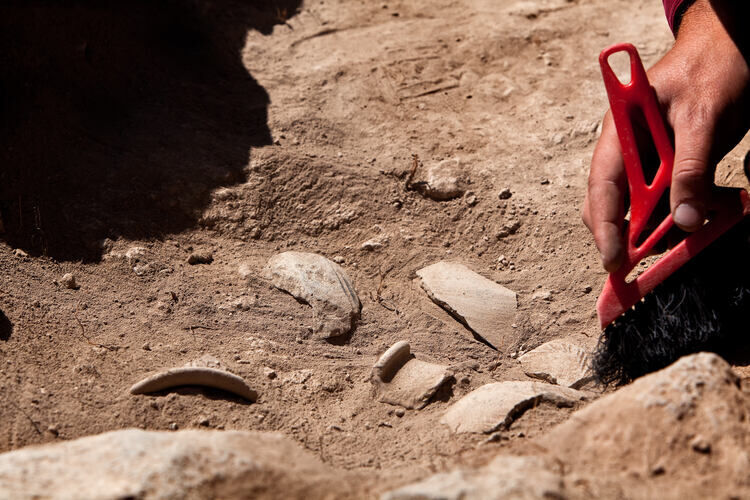
At first glance, there's nothing particularly special about the cave, but archaeologists have just made a remarkable discovery here. A discovery that has totally reshaped our view on the history of humans and when Homo sapiens first arrived in central Europe.
In the 1930s archaeologists excavated the cave and found artefacts and bones from Neanderthal man dating back to around 43,000 years ago. Now, new excavations in the cave by researchers from the Max Planck Institute for Evolutionary Anthropology, and whose findings have just been published in the journal Nature, has turned up something wholly unexpected. Fossils and artefacts dating back even further to 47,500 years ago that came not from Neanderthals but from Homo sapiens.
And this discovery means that Homo sapiens made it to central Europe far earlier than previously thought and that they lived here side by side with Neanderthals.
The rock layers where the excavators of the 1930s made their discovery are known as Lincombian-Ranisia-Jerzmanowician (LRJ). When the Max Plank archaeologists started these most recent excavations, they were hoping to unearth undisturbed LRJ rock layers containing more remnants from Neanderthal man.
'We were fortunate to find a 1.7-metre thick rock the previous excavators did not get past,' said Marcel Weiss, an archaeologist based at FAU Erlangen who was a part of the excavating team. 'After removing that rock by hand, we finally uncovered the LRJ layers and even found human fossils. This came as a huge surprise, as no human fossils were known from the LRJ before, and it was a reward for the hard work at the site'.
Never before have signs of Homo sapiens been found in the LRJ rock of this part of Europe. 'Stone artefacts that were thought to be produced by Neanderthals were, in fact, part of the early Homo sapiens tool kit,' said Jean-Jacques Hublin, a professor in palaeoanthropology at Collège de France. 'This fundamentally changes our previous knowledge about this time period: Homo sapiens reached northwestern Europe long before Neanderthal disappearance in southwestern Europe'.
But, it wasn't just human and Neanderthal bones that were discovered in the cave. There were also many animal bones, including those of cave bears and hyenas, who probably also used the cave for sheltering when humans weren't present. And, there were the bones of animals likely to have been hunted by the peoples who lived in this cave. These animals included reindeer (the world was much colder back then and this part of Germany would have had a climate more akin to that of Scandinavia today), horses and even woolly rhinoceros. By applying genetic testing to these bones and other artefacts found within the cave, the researchers were able to confirm the presence of human DNA. Having established this the researchers then applied radiocarbon dating techniques to date the Homo sapien occupation of the caves to 47,500 years ago. A date which shakes up our ideas about the chronology and settlement history of Europe north of the Alps.



Comment: Discoveries in China point to human habitation 45,000 years ago, and there's evidence of human activity in New Mexico dating back 37,000 years ago, and so it seems it's only a matter of time before further finds push the dates back much, much further; which will also likely show how not all humans originate 'Out of Africa':